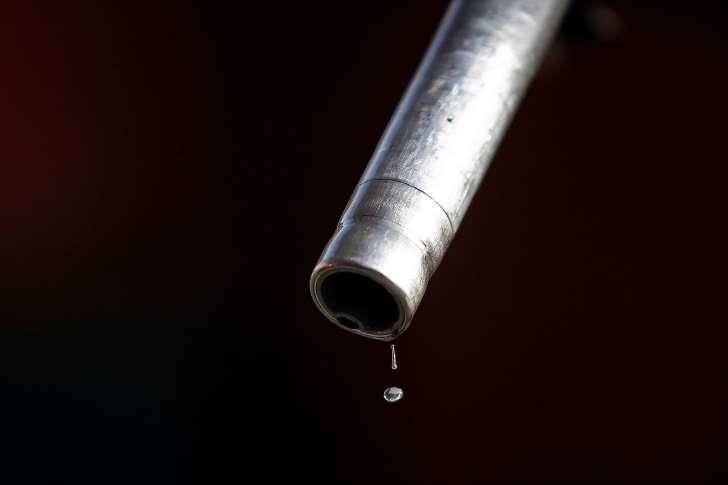April 14, 2015
In the heady days of the commodity boom, oil-rich nations accumulated billions of dollars in reserves they invested in U.S. debt and other securities. They also occasionally bought trophy assets, such as Manhattan skyscrapers, luxury homes in London or Paris Saint-Germain Football Club.

April 14, 2015
In the heady days of the commodity boom, oil-rich nations accumulated billions of dollars in reserves they invested in U.S. debt and other securities. They also occasionally bought trophy assets, such as Manhattan skyscrapers, luxury homes in London or Paris Saint-Germain Football Club.

Now that oil prices have dropped by half to $50 a barrel, Saudi Arabia and other commodity-rich nations are fast drawing down those “petrodollar” reserves. Some nations, such as Angola, are burning through their savings at a record pace, removing a source of liquidity from global markets.
If oil and other commodity prices remain depressed, the trend will cut demand for everything from European government debt to U.S. real estate as producing nations seek to fill holes in their domestic budgets.
“This is the first time in 20 years that OPEC nations will be sucking liquidity out of the market rather than adding to it through investments,” said David Spegel, head of emerging markets sovereign credit research at BNP Paribas SA in London.
Saudi Arabia, the world’s largest oil producer, is the prime example of the swiftness and magnitude of the selloff: its foreign exchange reserves fell by $20.2 billion in February, the biggest monthly drop in at least 15 years, according to data from the Saudi Arabian Monetary Agency. That’s almost double the drop after the financial crisis in early 2009, when oil prices plunged and Riyadh consumed $11.6 billion of its reserves in a single month.
The International Monetary Fund commodity index, a broad basket of natural resources from iron ore and oil to bananas and copper, fell in January to its lowest since mid-2009. Although the index has recovered a little since then, it still is down more than 40 percent from a record high set in early 2011.
Oil futures in New York traded at $52.78 a barrel today, 49 percent lower than a year ago.
Reserves Drop
A concomitant drop in foreign reserves, revealed in data from national central banks and the IMF, is affecting nations from oil producer Oman to copper-rich Chile and cotton-growing Burkina Faso. Reserves are dropping faster than during the last commodity price plunge in 2008 and 2009.
In Angola, reserves dropped last year by $5.5 billion, the biggest annual decline since records started 20 years ago. For Nigeria, foreign reserves fell in February by $2.9 billion, the biggest monthly drop since comparable data started in 2010.
Algeria, one of the world’s top natural gas exporters, saw its funds fall by $11.6 billion in January, the largest monthly drop in a quarter of century. At that rate, it will empty the reserves in 15 months.
Sales Decline
Excluding Iran, whose sales are subject to some sanctions, members of the Organization of Petroleum Exporting Countries are expected to earn $380 billion selling their oil this year, according to U.S. estimates. That represents a $350 billion drop from 2014 — the largest one-year decline in history.
“The shock for oil-rich countries is enormous,” Rabah Arezki, head of the commodities research team at the IMF in Washington, said in an interview.
Oil-rich countries will sell more than $200 billion of assets this year to bridge the gap left between high fiscal spending and low revenues, Spegel said.
The drawdown reverses a decade-long inflow into the coffers of commodity-rich nations which helped to increase funds available for investment and boost asset prices. Bond purchases have helped to keep interest rates low.
Oil producers recycled a large portion of their petrodollars – a term coined for the dollar-denominated oil trade – by buying sovereign debt of the U.S. and other countries. As they draw down reserves, Middle East countries are likely to sell “low-yielding European assets,” George Saravelos, strategist at Deutsche Bank AG, said in a note to clients.
Potential Effects
The potential impact of the selloff has divided analysts and officials.
One argument is that petrodollars and other commodity- linked foreign reserves are not a large enough force in an ocean of investments from pension funds, asset managers, insurers and individuals to make a real impact in asset prices and overall liquidity. Plus, bond purchases by central banks involved in so- called quantitative easing mitigates the impact of sales.
The other school of thought, broadly backed by the IMF, says that petrodollars matter because they’re significant enough to turn market sentiment as flows switch direction.
Market Sentiment
The change in commodity-related foreign reserve flows will have “an impact around the margins” in global markets, said Albert Edwards, global strategist at Societe Generale SA.
The disagreement is partly due to a lack of transparency. Tracking the change in commodity-driven savings is difficult because not all countries release timely data and some don’t disclose the size of their sovereign wealth funds.
Nonetheless, available data shows foreign savings by commodity-rich nations are dropping across the board. In Chile, the world’s top copper exporter, foreign savings fell $1.9 billion in February, the biggest drop in three years.
Analysts and officials anticipate that commodity-rich countries will continue selling off foreign assets through the year.
The IMF’s Arezki said that unless they cut spending, resources-rich nations “have no choice but to draw on their financial assets when available” as oil prices are well below the fiscal break-even needed by many exporting nations. The IMF estimates that many oil countries would only balance their budgets if crude prices recover to $75 or higher.
Saudi Arabia’s finance minister said in February that the world’s largest oil exporter had enough reserves to to last for “quite some time.”
“We have learned from the past,” Ibrahim Abdulaziz Al- Assaf told CNBC. “The oil market, everybody knows, goes through ups and downs and peaks and valleys.”
Courtesy: Bloomberg
















































































































